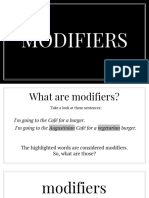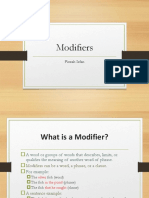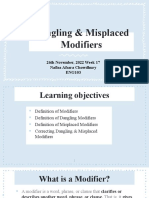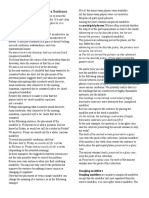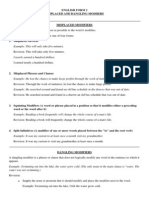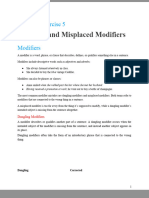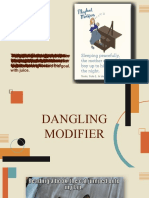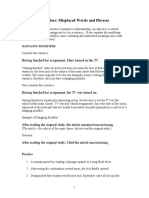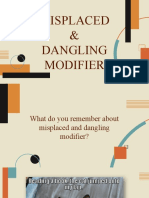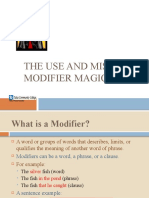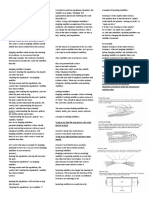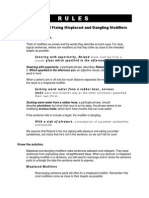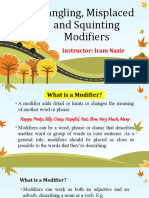0% found this document useful (0 votes)
60 views2 pagesDangling Modifier
1) A dangling modifier is a word, phrase, or clause used to modify a word that is not clearly stated in the sentence.
2) Dangling modifiers confuse readers because the intended target of the modifier is missing.
3) To fix a dangling modifier, the writer often needs to add a new element to the sentence to provide a target for the modifier to describe.
Uploaded by
Mirşahin İbrahimovCopyright
© © All Rights Reserved
We take content rights seriously. If you suspect this is your content, claim it here.
Available Formats
Download as PDF, TXT or read online on Scribd
0% found this document useful (0 votes)
60 views2 pagesDangling Modifier
1) A dangling modifier is a word, phrase, or clause used to modify a word that is not clearly stated in the sentence.
2) Dangling modifiers confuse readers because the intended target of the modifier is missing.
3) To fix a dangling modifier, the writer often needs to add a new element to the sentence to provide a target for the modifier to describe.
Uploaded by
Mirşahin İbrahimovCopyright
© © All Rights Reserved
We take content rights seriously. If you suspect this is your content, claim it here.
Available Formats
Download as PDF, TXT or read online on Scribd
/ 2



